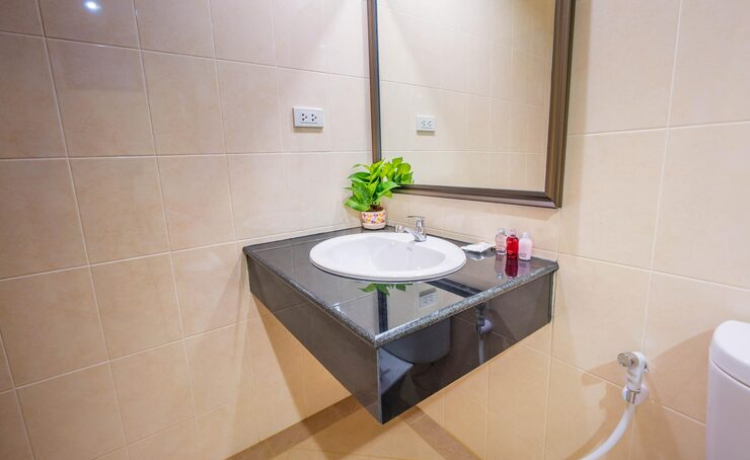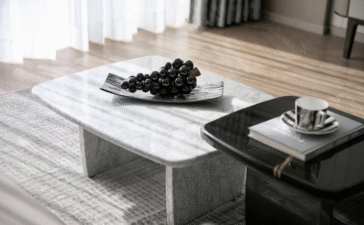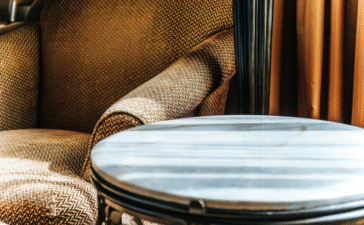Modern bathrooms demand both functionality and style, which is why wall mounted bathroom sink have become the go-to choice for homeowners and designers alike. These sleek fixtures offer a perfect solution for creating more space while maintaining a clean, contemporary aesthetic that transforms any bathroom into a sophisticated retreat.
Whether you’re renovating a cramped powder room or designing a luxury master bath, understanding the benefits, installation requirements, and material options for wall-mounted sinks will help you make an informed decision. This comprehensive guide explores everything you need to know about these space-saving bathroom fixtures, from choosing the right material to proper installation techniques.
The popularity of floating sinks has surged as more homeowners embrace minimalist design principles and seek practical solutions for small spaces. Unlike traditional pedestal or vanity-mounted options, wall mounted bathroom sink create the illusion of more floor space while providing the same functionality you expect from any high-quality fixture.
Why Choose a Wall-Mounted Bathroom Sink?
The appeal of wall mounted bathroom sink extends far beyond their modern appearance. These fixtures solve common bathroom challenges while offering design flexibility that traditional sinks simply cannot match.
Space-Saving Benefits That Make a Difference
Small bathroom sinks mounted on walls can transform even the most cramped spaces. By eliminating the need for a pedestal or vanity base, these fixtures free up valuable floor space that can make a bathroom feel significantly larger. This extra space proves particularly beneficial in powder rooms, guest bathrooms, or en-suites where every square inch matters.
The floating design also creates opportunities for creative storage solutions underneath the sink. Homeowners can install floating shelves, place a stylish stool, or simply enjoy the unobstructed floor space that makes cleaning much easier.
Aesthetic Appeal and Design Versatility
Space-saving bathroom sinks offer unmatched design flexibility that complements various interior styles. The clean lines and minimalist profile of these fixtures work equally well in contemporary, industrial, and transitional bathroom designs. Modern sink design trends favor the streamlined look that wall-mounted options provide, creating a sense of openness that enhances the overall bathroom experience.
The floating appearance of these sinks creates visual interest while maintaining the clean, uncluttered look that defines modern bathroom aesthetics. This design choice allows other bathroom elements, such as tile work or lighting fixtures, to take center stage in your design scheme.
Material Options for wall mounted bathroom sink
Selecting the right material for your wall-mounted sink affects both performance and appearance. Each material option offers distinct advantages that cater to different needs and design preferences.
Ceramic: The Classic Choice
Ceramic bathroom sinks remain the most popular option for wall-mounted installations due to their exceptional durability and easy maintenance. The non-porous surface resists stains and bacteria, making these sinks ideal for busy family bathrooms. Ceramic options come in numerous colors and finishes, allowing you to match or contrast with your existing bathroom palette.
The manufacturing process for ceramic sinks has evolved significantly, with modern versions offering improved chip resistance and thermal shock protection. These improvements make ceramic an excellent long-term investment for any bathroom renovation project.
Fireclay: Superior Performance
Fireclay sinks represent the premium end of the ceramic family, offering enhanced durability through a specialized firing process. The result is a non-porous surface that resists scratches, stains, and thermal damage better than standard ceramic options. The heat-resistance properties of fireclay make it particularly suitable for bathrooms with heated towel rails or radiant floor heating systems.
The smooth, glossy finish of fireclay sinks maintains their appearance for decades with minimal maintenance, making them an excellent choice for homeowners seeking a long-term solution.
Stainless Steel: Industrial Elegance
Stainless steel bathroom sinks bring an industrial aesthetic to modern bathrooms while offering practical benefits that appeal to many homeowners. The material’s natural antibacterial properties and resistance to corrosion make it an excellent choice for high-use bathrooms.
The sleek appearance of stainless steel complements contemporary fixtures and hardware, creating a cohesive design theme. Modern manufacturing techniques have eliminated many of the water-spotting issues traditionally associated with stainless steel, making these sinks easier to maintain than ever before.
Porcelain: Timeless Beauty
Porcelain wall-mounted sinks offer the classic beauty that never goes out of style. The smooth, refined finish provides an elegant appearance that works well in both traditional and contemporary bathroom designs. The dense composition of porcelain makes it highly resistant to chipping and cracking, ensuring years of reliable service.
The versatility of porcelain allows manufacturers to create sinks in various shapes and sizes, from compact round designs perfect for powder rooms to larger rectangular options suitable for master bathrooms.
Installation of Wall-Mounted Sinks: What You Need to Know
Proper installation is crucial for the safety and longevity of any wall-mounted bathroom sink. Understanding the requirements and best practices ensures your sink will provide years of reliable service.
Support and Anchoring Requirements
Installing a wall-mounted sink requires secure anchoring to wall studs or appropriate backing material. The sink and its mounting hardware must support not only the weight of the fixture itself but also the dynamic loads created during use. Professional installers typically use heavy-duty wall anchors or mounting brackets specifically designed for bathroom fixtures.
The wall material also plays a crucial role in installation success. Drywall installations require additional backing or blocking between studs to distribute the load properly. Tile or other finish materials must be considered when determining the final mounting height and bracket placement.
Proper Height for Comfort and Accessibility
Bathroom sink installation height affects both comfort and functionality for all users. Standard mounting height ranges from 30 to 36 inches from the floor to the sink rim, with 32 inches being the most common choice for general use. However, the specific height should be adjusted based on the primary users’ needs and any accessibility requirements.
Taller individuals may prefer sinks mounted at 36 inches, while families with children might opt for a lower installation. The flexibility of wall-mounted sinks makes it easier to customize the height compared to pedestal or vanity-mounted options.
Professional Installation vs. DIY
While experienced DIY enthusiasts can install wall-mounted sinks, professional installation ensures proper plumbing connections and structural support. Licensed plumbers have the expertise to handle supply line modifications, drain connections, and any unexpected issues that arise during installation.
Professional installation also ensures compliance with local building codes and provides warranty protection for both the fixture and the installation work. The cost of professional installation often proves worthwhile when considering the potential consequences of improper mounting or plumbing connections.
Wall-Mounted Sinks for Accessibility: ADA Compliance and Customization
Accessible bathroom design has become increasingly important as homeowners plan for aging in place and accommodate family members with mobility challenges. Wall-mounted sinks offer unique advantages for creating ADA-compliant bathroom spaces.
ADA-Compliant Design Features
ADA bathroom sinks must meet specific dimensional requirements to ensure accessibility for wheelchair users and individuals with mobility limitations. Wall-mounted sinks can be installed at the required height of 34 inches maximum, with adequate knee and toe clearance underneath the fixture.
The floating design of wall-mounted sinks naturally provides the clear floor space required by ADA guidelines. This clearance allows wheelchair users to approach the sink comfortably while providing the maneuvering space necessary for safe and independent use.
Customization for Different Needs
Accessible bathroom designs benefit from the installation flexibility that wall-mounted sinks provide. Customized sink heights can accommodate specific user needs without requiring extensive renovation work. The ability to adjust the mounting height during installation makes it easier to create bathroom spaces that serve multiple users with different accessibility requirements.
Modern accessible design focuses on universal usability rather than specialized equipment. Wall-mounted sinks contribute to this approach by providing functionality that works well for users of all abilities while maintaining an attractive appearance.
Top Features to Consider When Buying a Wall-Mounted Sink
Selecting the right wall-mounted bathroom sink requires careful consideration of several factors that affect both performance and aesthetics. Understanding these features helps ensure you choose a sink that meets your specific needs and design goals.
Design and Style Options
Bathroom sink design has evolved to include numerous shapes and styles that complement different aesthetic preferences. Round sinks create a softer, more organic feel that works well in spa-inspired or transitional bathroom designs. Square and rectangular options provide clean, geometric lines that enhance contemporary and modern bathroom styles.
Angular designs with sharp corners and straight edges emphasize the minimalist aesthetic that many homeowners prefer in modern bathrooms. The choice between these design approaches should consider both personal preference and how the sink will integrate with other bathroom fixtures and finishes.
Durability and Longevity Considerations
Durable bathroom sinks represent a significant investment in your home’s functionality and value. The material choice affects not only the initial appearance but also how well the sink will perform over time. Consider factors such as resistance to chips, cracks, stains, and thermal shock when evaluating different options.
The quality of the mounting hardware and installation method also affects long-term durability. High-quality sinks typically include robust mounting systems designed to handle the stresses of daily use without compromising safety or stability.
Drainage and Plumbing Integration
Hidden plumbing systems create the clean, streamlined appearance that makes wall-mounted sinks so attractive. Modern installations can route supply lines and drain connections through the wall, eliminating visible plumbing that can detract from the sink’s minimalist appeal.
Wall-mounted faucets complement the floating sink design by further reducing visual clutter. These faucets mount directly to the wall above the sink, creating a seamless integration between the plumbing fixtures and the sink itself.
Wall-Mounted Sinks vs. Pedestal Sinks: Which Is Right for You?
Choosing between wall-mounted and pedestal sinks involves evaluating the specific requirements of your bathroom space and design preferences. Each option offers distinct advantages that may make it more suitable for particular applications.
Space Efficiency Comparison
Wall-mounted sink vs pedestal comparisons often focus on space utilization. Wall-mounted options provide superior space efficiency by eliminating the floor-mounted pedestal that can make small bathrooms feel cramped. The floating design creates an open feeling that makes rooms appear larger than they actually are.
Pedestal sinks do provide some storage capability within the pedestal base, but this advantage often gets overshadowed by the floor space they consume. Space-efficient sinks that mount to the wall allow homeowners to use the floor area underneath for other purposes or simply enjoy the increased sense of openness.
Design Flexibility and Storage Options
Floating sink design offers greater flexibility for bathroom layouts and storage solutions. The open space beneath wall-mounted sinks can accommodate various storage options, from floating shelves to rolling carts that can be moved as needed.
Pedestal sinks limit design options due to their fixed height and the visual weight of the pedestal base. Wall-mounted sinks allow for more creative approaches to bathroom design, including the integration of complementary fixtures and accessories.
Maintenance and Care for wall mounted bathroom sink
Proper maintenance extends the life and appearance of any bathroom fixture. Wall-mounted sinks require specific care techniques that vary based on the material and installation type.
Material-Specific Cleaning Approaches
Learning how to clean bathroom sinks properly depends largely on the material composition. Ceramic and porcelain sinks respond well to mild abrasive cleaners and can handle regular scrubbing without damage. These materials resist most household cleaners, making them easy to maintain with standard bathroom cleaning products.
Maintaining porcelain sinks requires avoiding harsh chemicals that can dull the glossy finish over time. Regular cleaning with mild soap and water maintains the appearance while preventing the buildup of soap scum and mineral deposits that can affect both appearance and hygiene.
Stainless Steel Care Requirements
Stainless steel sink care involves preventing water spots and maintaining the material’s natural luster. Specialized stainless steel cleaners help remove fingerprints and water marks while protecting the surface from corrosion. Regular cleaning and immediate attention to spills prevent staining and maintain the industrial aesthetic that makes these sinks attractive.
The key to long-term stainless steel maintenance involves understanding which cleaning products to avoid. Chlorine-based cleaners and abrasive compounds can damage the protective finish, leading to corrosion and discoloration that cannot be easily reversed.
Long-Term Maintenance Strategies
Preventing wear and tear requires attention to both cleaning practices and usage patterns. Avoiding impact damage from heavy objects and using appropriate cleaning tools helps maintain the sink’s appearance and functionality over time.
Regular inspection of mounting hardware and plumbing connections helps identify potential issues before they become major problems. The accessibility of wall-mounted installations makes these inspections easier compared to pedestal or vanity-mounted options.
Where to Buy the Best wall mounted bathroom sink
Finding a quality wall mounted bathroom sink requires knowing where to look and what to expect from different retailers. The market offers options ranging from budget-friendly basic models to high-end designer fixtures.
Reputable Brands and Retailers
Best bathroom sink brands include established manufacturers known for quality and reliability. Companies like Kohler, American Standard, and Toto offer extensive collections of wall-mounted sinks with proven track records for durability and customer satisfaction.
Specialty bathroom retailers often provide better selection and expertise compared to general home improvement stores. These retailers typically employ knowledgeable staff who can provide guidance on installation requirements and compatibility with existing plumbing systems.
Online vs. In-Store Shopping
The decision to buy wall-mounted sinks online or in-store depends on your comfort level with the selection process and installation requirements. Online retailers often offer better prices and wider selection, but in-store shopping allows you to see and touch the fixtures before making a purchase decision.
Where to buy modern bathroom sinks effectively involves considering factors such as return policies, shipping costs, and local installation support. Many online retailers now offer local delivery and installation services that combine the convenience of online shopping with professional installation support.\
Also Check: “undermount bathroom sink“
Transform Your Bathroom with the Right Choice
wall mounted bathroom sink represent more than just a trend they offer practical solutions for modern living while providing the aesthetic appeal that enhances any bathroom design. The space-saving benefits, design flexibility, and accessibility advantages make these fixtures an excellent choice for homeowners seeking to maximize both function and style.
The key to success lies in understanding your specific needs and choosing the right combination of material, design, and installation approach. Whether you’re working with a compact powder room or designing a luxury master bathroom, wall-mounted sinks can provide the perfect foundation for your vision.
Consider consulting with bathroom design professionals who can help you navigate the various options and ensure your installation meets all safety and code requirements. The investment in quality fixtures and proper installation will provide years of satisfaction and add value to your home.
Frequently Asked Questions
How much weight can a wall-mounted bathroom sink support?
Most wall mounted bathroom sink can safely support 50-75 pounds when properly installed with appropriate wall anchors and backing. The actual weight capacity depends on the mounting system, wall construction, and sink material. Professional installation ensures proper load distribution and maximum safety.
Can I install a wall-mounted sink on any type of wall?
Wall-mounted sinks can be installed on most wall types, but the installation method varies based on construction materials. Drywall installations require additional backing or blocking, while concrete or masonry walls may need specialized anchors. Always consult with a professional installer to determine the best approach for your specific wall construction.
What is the standard height for mounting a bathroom sink?
Standard mounting height for wall mounted bathroom sink ranges from 30-36 inches from floor to sink rim, with 32 inches being most common. ADA-compliant installations require a maximum height of 34 inches. The optimal height depends on user preferences and accessibility requirements.
Do wall-mounted sinks require special plumbing?
Wall-mounted sinks typically require supply lines and drain connections routed through the wall for the cleanest appearance. While this may require some plumbing modifications, most installations can work with existing rough plumbing locations. A licensed plumber can assess your specific situation and recommend the best approach.
How do I prevent my wall-mounted sink from loosening over time?
Proper installation with appropriate anchors and backing prevents loosening issues. Regular inspection of mounting hardware and immediate attention to any movement or unusual sounds helps maintain secure installation. Professional installation includes appropriate sealants and mounting techniques that resist loosening from normal use.
Are wall-mounted sinks more expensive than pedestal sinks?
Wall-mounted sinks range from budget-friendly options comparable to pedestal sinks to high-end designer models. The total cost including installation may be higher due to potential wall modifications and specialized mounting requirements. However, the long-term benefits often justify the initial investment.
What maintenance is required for a wall mounted bathroom sink?
Maintenance requirements vary by material but generally involve regular cleaning with appropriate products and periodic inspection of mounting hardware. Ceramic and porcelain sinks require minimal maintenance, while stainless steel options need specialized cleaners to prevent water spots and maintain their finish.
Can wall-mounted sinks work in small bathrooms?
Wall-mounted sinks are ideal for small bathrooms because they create the illusion of more space by eliminating floor-mounted pedestals or vanities. The floating design opens up floor space and makes small rooms feel larger while providing full sink functionality.












